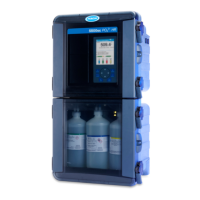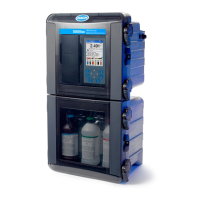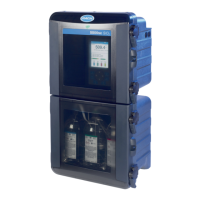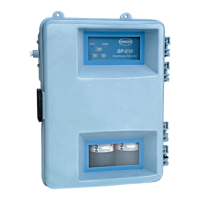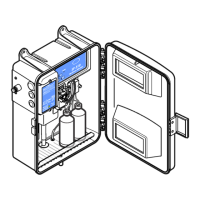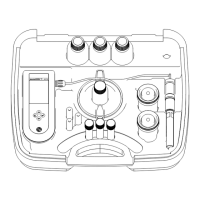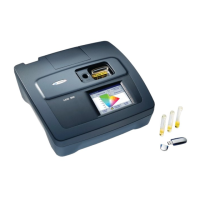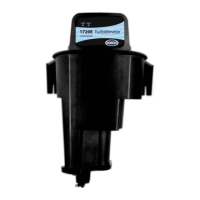Configure the outputs
4–20 mA module setup
1. Push menu and select SETUP SYSTEM>SETUP OUTPUTS>4–20mA SETUP.
2. Select the OUTPUT.
3. Select an option.
Option Description
ACTIVATION The menu list items change with the selected function. Refer to 4–20 mA activation
options on page 11 for more information.
SELECT SOURCE Select the output. Options: None if the output is not configured, the analyzer name or
calculation if a calculation formula has been configured. Refer to Set up the calculation
on page 10.
SET PARAMETER Select the measurement channel from the list.
SET FUNCTION Select a function. Further options will vary depending on which function is chosen.
LINEAR CONTROL—Signal is linearly dependent on the process value. PID CONTROL
—Signal works as a PID (Proportional, Integral, Derivative) controller. LOGARITHMIC—
Signal is represented logarithmically within the process variable range. BILINEAR—
Signal is represented as two linear segments within the process variable range.
SET TRANSFER If TRANSFER is or will be selected as the ERROR HOLD MODE, select SET
TRANSFER and enter the transfer value. Range: 3.0 to 23.0 mA (default = 4.000). Refer
to Set the error hold mode on page 14.
SET FILTER Enter the filter value. This is a time-average filter value of 0 to 120 seconds (default = 0).
SCALE 0mA/4mA Select the scale (0–20 mA or 4–20 mA).
4–20 mA activation options
1. Push menu and select SETUP SYSTEM>SETUP OUTPUTS>4–20mA SETUP.
2. Select the applicable OUTPUT.
3. Select SET FUNCTION>LINEAR CONTROL and then select the applicable options in the
ACTIVATION menu.
Option Description
SET LOW VALUE Sets the low endpoint of the process variable range.
SET HIGH VALUE Sets the high endpoint (upper value) of the process variable range.
4. Select SET FUNCTION>PID CONTROL and then select the applicable options in the
ACTIVATION menu.
Option Description
SET MODE AUTO—the signal is automatically controlled by the algorithm when the analyzer uses
proportional, integral and derivative inputs.
MANUAL—the signal is controlled by the user. To change the signal manually, change the
% value in MANUAL OUTPUT.
PHASE Selects the signal result when process changes occur.
DIRECT—signal increases as the process increases.
REVERSE—signal increases as the process decreases.
SET SETPOINT Sets the value for a control point in the process.
PROP BAND Sets the value for the difference between the measured signal and the necessary setpoint.
INTEGRAL Sets the period of time from the reagent injection point to the contact with the measuring
device.
English 11

